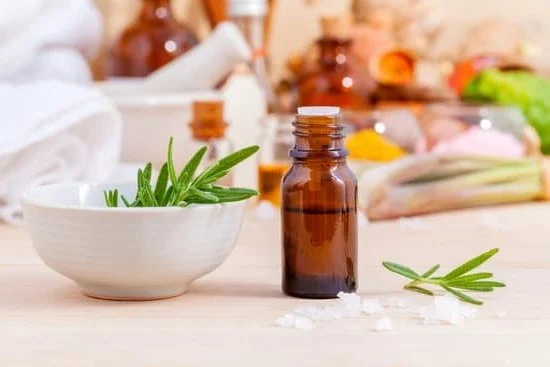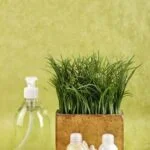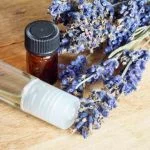Are you wondering how to clean aromatherapy without a diffuser? Aromatherapy is a popular practice that harnesses the power of essential oils to promote overall well-being and relaxation. Whether you use essential oils for stress relief, better sleep, or simply to create a pleasant scent in your home, it’s important to keep your aromatherapy tools clean to ensure their effectiveness and safety.
There are various alternatives to using diffusers for aromatherapy, including inhalation, topical application, and DIY room sprays. However, no matter which method you choose, it’s crucial to understand the significance of regular cleaning. This article will explore different ways to incorporate essential oils into your routine while also providing natural and effective cleaning solutions for maintaining your aromatherapy tools.
Regular cleaning of your aromatherapy tools is essential in preventing the growth of bacteria and mold, which can compromise the quality of your essential oils and potentially cause harm. By following proper cleaning techniques and utilizing homemade cleaning solutions, you can ensure that your aromatherapy tools remain safe and effective for daily use. Let’s delve into the importance of keeping your aromatherapy tools clean and explore various methods for doing so.
Alternatives to Diffusers
Aromatherapy is a popular practice that utilizes the natural scents of essential oils to promote health and well-being. While diffusers are a common way to enjoy the benefits of aromatherapy, there are several alternative methods for using essential oils. These alternatives include inhalation, topical application, and DIY room sprays. Each method offers its own unique benefits and can be a great option for those looking to clean their aromatherapy tools without a diffuser.
Inhalation is one of the most direct ways to reap the benefits of essential oils. Simply adding a few drops of your favorite oil to a bowl of hot water or a cotton ball and inhaling deeply can help to improve mood, reduce stress, and alleviate respiratory symptoms.
Another method is topical application, where essential oils are diluted with a carrier oil and applied directly to the skin. This allows for absorption into the bloodstream, making it an effective way to address various health concerns such as pain management or skincare.
For those who prefer not to inhale or apply essential oils directly, DIY room sprays are an excellent option for enjoying aromatherapy benefits. By combining water, alcohol, and essential oils in a spray bottle, you can create your own customized scent to freshen up any room in your home. This method not only provides a pleasant aroma but also helps clear the air and create a calming atmosphere.
As you explore these alternative methods for using essential oils in aromatherapy, it’s important to keep in mind how to clean aromatherapy tools without a diffuser. Regular cleaning and maintenance will help ensure that your tools remain safe and effective for use over time.
| Method | Description |
|---|---|
| Inhalation | Add drops of oil to hot water or cotton ball for direct inhalation |
| Topical Application | Dilute with carrier oil and apply directly to skin |
| DIY Room Sprays | Create custom scents using water, alcohol, and essential oils in spray bottle |
Importance of Cleaning
Aromatherapy has been used for centuries as a natural way to promote relaxation, improve mood, and support overall well-being. Whether you use essential oils for inhalation, topical application, or DIY room sprays, it’s essential to keep your aromatherapy tools clean to prevent bacteria and mold growth. In this section, we will explore the importance of cleaning your aromatherapy tools regularly and provide tips on how to do so effectively without a diffuser.
Keeping your aromatherapy tools clean is crucial for maintaining their effectiveness and ensuring your safety. Essential oil bottles, inhalers, and other tools can become contaminated with bacteria if not cleaned properly, which can compromise the quality of the oils and potentially cause skin irritation or other adverse reactions. Additionally, mold can develop in humid environments or on moist surfaces, posing health risks when inhaled or applied to the skin.
To clean aromatherapy tools without a diffuser, consider using natural cleaning solutions that are gentle yet effective. A simple homemade cleaning solution can be made by combining equal parts water and white vinegar in a spray bottle. This solution can be used to wipe down essential oil bottles, inhalers, and other non-electronic aromatherapy tools.
For electronic diffusers or other similar devices that require more thorough cleaning, a mixture of water and rubbing alcohol can be used to disinfect the surfaces. It’s important to follow manufacturer guidelines for specific cleaning instructions when dealing with electronic devices.
Regularly cleaning your aromatherapy tools will not only prolong their lifespan but also ensure that you are getting the full benefits of the essential oils you use. By incorporating these cleaning practices into your aromatherapy routine, you can enjoy all the positive effects of essential oils while minimizing any potential risks associated with contamination.
Homemade Cleaning Solutions
When it comes to cleaning aromatherapy tools, using natural and effective cleaning solutions is crucial to maintain their quality and safety. Whether you are cleaning essential oil bottles, inhalers, or diffuser jewelry, homemade cleaning solutions can effectively remove dirt, bacteria, and residue without the need for harsh chemicals. Here are a few recipes for natural cleaning solutions using ingredients like vinegar, baking soda, and essential oils.
Vinegar is a versatile ingredient that can be used as a base for many homemade cleaning solutions. To clean essential oil bottles, mix equal parts of white vinegar and water in a spray bottle. Spray the solution into the bottle, let it sit for a few minutes, then rinse thoroughly with warm water. This will help remove any leftover oils and residue from the bottle.
Baking soda is another powerful ingredient that can eliminate odors and disinfect aromatherapy tools. To clean diffuser jewelry or inhalers, create a paste using baking soda and water. Gently scrub the jewelry or inhaler with the paste using a soft-bristled brush or cloth, then rinse with water and pat dry. This will help keep your jewelry and inhalers free from buildup and bacteria.
Incorporating essential oils into your homemade cleaning solutions not only enhances their fragrance but also adds antibacterial properties. For an all-purpose cleaner for diffusers or other surfaces, combine water, white vinegar, and several drops of tea tree or lavender essential oil in a spray bottle. This solution can be used to clean the surface of your diffuser or any other aromatherapy tool to ensure that they stay clean and safe for use.
These natural cleaning solutions are not only effective but also safe for both you and the environment when compared to commercial chemical cleaners. By incorporating these recipes into your regular maintenance schedule, you can ensure that your aromatherapy tools remain free from contaminants while prolonging their lifespan.
Cleaning Techniques for Different Tools
When it comes to aromatherapy, it’s not just your diffuser that needs regular cleaning. Properly maintaining all of your aromatherapy tools is essential to ensure their longevity and effectiveness. In this section, we will discuss specific cleaning methods for various aromatherapy tools such as essential oil bottles, inhalers, and diffuser jewelry.
Essential Oil Bottles
To clean your essential oil bottles, start by removing any remaining oil from the bottle by pouring it into an empty bottle or mixing it with a carrier oil for immediate use. Then, remove the label from the bottle and wash it with warm, soapy water. For stubborn residue, you can use a small brush or pipe cleaner to scrub the inside of the bottle. Lastly, rinse the bottle thoroughly and allow it to air dry before reusing.
Inhalers
Cleaning inhalers requires disassembling the parts and washing them separately in warm soapy water. Be sure to thoroughly clean the inner tube and other components to prevent any buildup of oils or debris. Once each part has been cleaned, rinse them well and allow them to air dry before reassembling.
Diffuser Jewelry
To clean diffuser jewelry such as necklaces or bracelets, begin by removing the felt pad or other absorbent material from the locket or pendant. Soak these materials in warm soapy water and gently scrub them to remove any oily residue. As for the metal or ceramic part of the jewelry, wipe it down with a cloth dipped in a mixture of water and mild soap. Allow all components to completely dry before reassembling.
By following these specific cleaning methods for different aromatherapy tools, you can help prevent bacteria and mold growth while ensuring that your essential oils remain pure and effective for aromatherapy purposes. Implementing regular cleaning practices will not only extend the lifespan of your tools but also contribute to a healthier aromatherapy experience overall.
Storage Tips
Proper Storage Containers
When it comes to storing your aromatherapy tools, it’s important to use the right containers to prevent contamination. Essential oils should be stored in dark glass bottles to protect them from light and air exposure, which can cause them to degrade. Additionally, make sure the lids of the bottles are tightly sealed to prevent any leakage or evaporation of the oils.
Avoiding Heat and Sunlight
To maintain the potency and quality of your essential oils, store them away from direct sunlight and heat sources. Exposure to heat and sunlight can cause essential oils to deteriorate and lose their therapeutic properties. It’s best to store your oils in a cool, dark place such as a cabinet or drawer.
Separate Storage for Different Oils
If you have a collection of different essential oils, it’s crucial to store them separately. Some oils can interact with each other and affect their composition if they are stored together. Keeping each oil in its own designated storage space will prevent cross-contamination and ensure that each oil maintains its original properties.
By following these storage tips, you can prolong the shelf life of your essential oils and keep them safe from contamination. Proper storage is key in maintaining the quality and effectiveness of your aromatherapy tools.
Maintenance Schedule
When it comes to maintaining the cleanliness of your aromatherapy tools, having a regular cleaning schedule is essential. This not only ensures that your tools stay free from bacteria and mold but also prolongs their lifespan, allowing you to enjoy the benefits of aromatherapy for a longer time. Here’s how you can create a simple and effective maintenance schedule to keep your aromatherapy tools clean and safe to use.
First and foremost, it’s important to understand that different aromatherapy tools may require different cleaning frequencies. For example, items that come into direct contact with the skin, such as inhalers or diffuser jewelry, should be cleaned more frequently than items like essential oil bottles or room diffusers. Therefore, it’s advisable to categorize your aromatherapy tools based on their usage and contact with oils, which will help you determine how often they need to be cleaned.
Next, consider setting aside specific days or times during the week dedicated solely to cleaning your aromatherapy tools. This will help integrate the cleaning process into your routine, ensuring that it doesn’t get overlooked or neglected. For instance, you can schedule a deep clean of all your tools once a week, focusing on thorough disinfection and maintenance. Additionally, quick wipe-downs or spot cleaning can be done daily or every few days as needed.
Lastly, document your maintenance schedule in a way that is easily accessible and visible. This could mean creating a physical chart or calendar where you mark off each cleaning session once it’s completed, or setting digital reminders on your phone or computer for when certain tasks need to be done. Having a visual representation of your cleaning schedule will help you stay organized and accountable in maintaining the cleanliness of your aromatherapy tools.
| Category | Cleaning Frequency |
|---|---|
| Direct Skin Contact Tools (Inhalers/Diffuser Jewelry) | Every 1-2 days |
| Essential Oil Bottles | Once a week |
| Room Diffusers | Every 1-2 weeks |
Conclusion
In conclusion, maintaining clean aromatherapy tools is crucial for ensuring the effectiveness and safety of your aromatherapy practice. Regular cleaning not only prevents the growth of bacteria and mold but also extends the life of your essential oils and tools. By implementing the tips and techniques provided in this article, you can continue to enjoy the benefits of aromatherapy without risking contamination or diminished effects.
It is important to remember that there are several alternatives to diffusers for using essential oils in aromatherapy, such as inhalation, topical application, and DIY room sprays. Regardless of the method you choose, it is essential to keep your tools clean to maintain their efficacy. Whether using commercial products or homemade cleaning solutions, taking the time to properly clean and store your tools will ensure that they remain safe and effective for use.
By following a recommended maintenance schedule and incorporating proper storage techniques, you can further prevent contamination and preserve the quality of your aromatherapy tools. Taking proactive steps to clean and care for your tools will not only benefit your own well-being but also contribute to a more sustainable and mindful approach to aromatherapy practices. So, take action today by cleaning your aromatherapy tools with natural solutions and incorporating regular maintenance into your routine.
Frequently Asked Questions
How Can I Diffuse Essential Oils Without a Diffuser?
Essential oils can be diffused without a diffuser by using alternative methods such as adding a few drops to a bowl of hot water, creating a DIY reed diffuser, or applying the oil to jewelry or fabric.
How Do You Clean Aromatherapy?
Aromatherapy products can be cleaned by wiping them with a damp cloth or using mild soap and water. For essential oil residue in a diffuser, vinegar can be used to clean and disinfect the device.
What Can I Use to Diffuse Essential Oil?
Various tools can be used to diffuse essential oils, including reed diffusers, ceramic or clay diffusers, personal inhalers, and even cotton balls or tissues. Each method offers different benefits depending on one’s preference and needs.

Are you looking for a natural way to improve your health and wellbeing?
If so, aromatherapy may be the answer for you.





